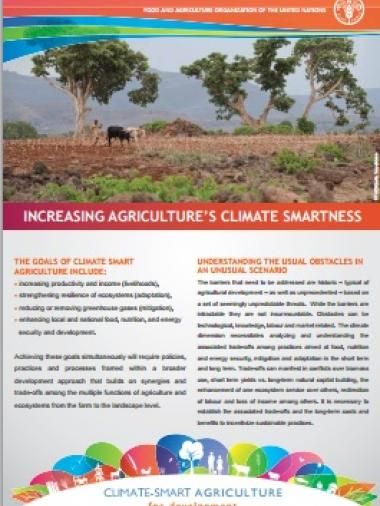Low emission development strategies in agriculture. An Agriculture, Forestry, and Other Land Uses (AFOLU) perspective

As countries experience economic growth and choose among available development pathways, they are in a favorable posi- tion to adopt natural resource use technologies and production practices that favor efficient use of inputs, healthy soils, and ecosystems. Current emphasis on increasing resilience to climate change and reducing agricultural greenhouse gasses (GHG) emissions strengthens the support for sustainable agricultural production. In fact, reducing losses in soil fertility, reclaiming degraded lands, and promoting synergistic interaction between crop production and forests are generally seen as good climate change policies. In order for decision-makers to develop long-term policies that address these issues, they must have tools at their disposal that evaluate trade-offs, opportunities, and repercussions of the options considered. In this paper, the authors combine and reconcile the output of three models widely accessible to the public to analyze the impacts of policies that target emission reduction in the agricultural sector. We present an application to Colombia which reveals the importance of considering the full scope of interactions among the various land uses. Results indicate that investments in increasing the efficiency and productivity of the livestock sector and reducing land allocated to pasture are preferable to policies that target deforestation alone or target a reduction of emissions in crop production. Investments in livestock productivity and land-carrying capacity would reduce deforestation and provide sufficient gains in carbon stock to offset greater emissions from increased crop production while generating higher revenues.
Citation
De Pinto A, Li M, Haruna A, Hyman GG, Londoño MA, Creamer B, Kwon H, Valencia JB, Tapasco J, Martinez JD. 2016. Low emission development strategies in agriculture. An agriculture, forestry, and other land uses (AFOLU) perspective. World Development 87:180-203.